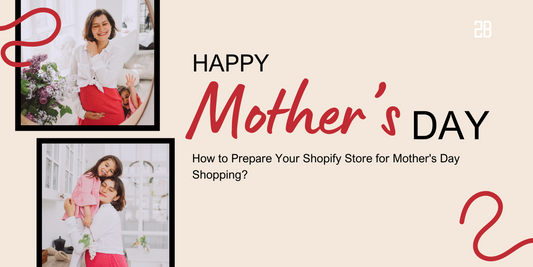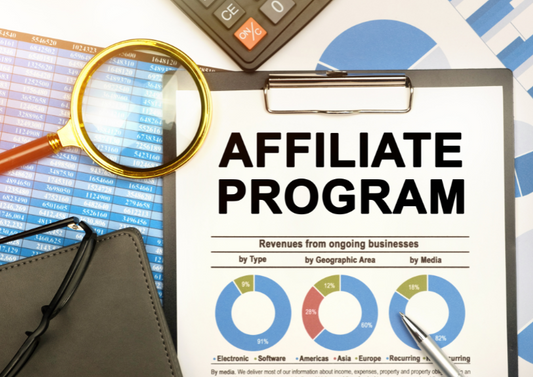It’s easier than ever to start an online business with an online platform such as Shopify. With the global fast fashion market value estimated to reach 187 million dollars by 2027, the time is now if you want to start a clothing brand, whether it’s designer clothes, vintage items, or second-hand.
This article will be the guide you need to sell on Shopify, providing all the best practices for a fashion line from developing the business plan to marketing the products and choosing the best tools. But first, let’s start with.
Why should you choose Shopify for your clothing business?

As of June 2023, Shopify had 520,321 live stores in the Apparel category with some big names like Fashion Nova, Goodfair, Taylor Stitch, or Good American. Founded in 2006, Shopify has since become a top eCommerce platform for small to medium sized retailers to create and manage online selling.
New eCommerces stores and startups can quickly create the most unique eCommerce website to sell clothes, using professionally designed and visually stunning themes from Shopify. All themes are mobile responsive so fashion brands can have an amazing visual on all devices and increase mobile conversion rate.
Not only that, Shopify also has an app store with thousands of integrations for all of eCommerce needs. The platform is ready to be connected with other social platforms (Facebook, Instagram) and marketplaces (Amazon, eBay, Etsy) so you can expand the eCommerce power.
Lastly, Shopify's pricing plans start at only $19 per month, which proves to be one of the best solutions for starting a clothing brand.
10 Best practices to start selling clothes on Shopify

The competition of eCommerce fashion brands is fierce, so choosing a platform is only the beginning. We need high-quality best practices to hit the right spot on the market and reap the rewards. Here are 10 of them for you.
1. Find the target customers
Everything starts with the buyers, who will be most willing to buy the clothing products that you offer. If you could identify the correct target customers, the conversion rate would be much higher, so take some time to research their demographic stats such as:
- Age
- Gender
- Income
- Location
- Behaviors
- Personal interests
Shopify analytics will help segment your buyers to create a bigger impact. For example, your 45-50-year-old customers would want different offers in their inboxes from 18-25-year-old customers.
2. Develop a suitable business model
The business model explains how you will sell clothes online. From the identified niche customers, you can start considering the budget, suitable products, and required resources. There are 6 main fashion business models that you can choose from:
- Self-made fashion
- Dropshipping
- Print on Demand (POD)
- Boutique
- Manufacturing
- Second-hand clothes
Each model has its pros and cons, but the rule of thumb is to choose the one that matches your current budget and resources. Dropshipping may require little to no cost, but if you want to start a fashion line, then the Boutique approach may be better.
Breakdown your business model into smaller parts as follows to have a better picture:
- The structure of the business
- The inventory management method
- The required business licenses
- The funding sources
- The competitors
- The overall budget
3. Research for trustworthy suppliers
With a business model, you may want to jump into creating whatever products that customers want. But don’t do that, since your suppliers will be a deciding factor in what you can make.
It’s highly important to find trustworthy suppliers that can provide high-quality materials or items at a competitive price. Look into factors like minimum order quantities, lead times, guarantee policy, and shipping costs before signing a contract.
4. Aim for an enjoyable shopping experience
Now, you are ready to start creating and selling clothes on your Shopify store, whether it’s baby clothes, vintage clothes, plus-size clothes, or any other fashion products. Putting your items on Shopify is easy, so we won’t get into details. But if you are already on another platform, consider a migration service to move all your sales data safely into Shopify.
What you should focus on here is creating a great shopping experience, whether through the website portal or on the POS machine at the retail store. Take great pictures and videos of your clothing, recommend buyers on the right fit, and let them purchase without any inconvenience.
5. Have a competitive pricing strategy
Pricing strategy is a challenging yet essential part of your profit margin. A low price may reduce the ROI, while a high price can turn customers away. Consider the production cost to have the best possible price. Remember to do some market research to look at competitors’ prices
A basic formula is that the appropriate Price equals cost multiplied by 2, or by 2.5 if you want to factor in taxes.
6. Create a marketing plan for growth

Without a marketing plan, your Shopify clothing store may languish without anyone knowing about it. To reach more customers, think of ways to market your business such as email marketing, SEO, advertising, or KOLs.
Some marketing ideas that you can apply are:
- Search engine optimization or SEO helps get your website at the top of the search result pages.
- Social media helps connect with target audience and act as a sales channel
- KOLs such as fashion influencers help spread the word and act as affiliates
- Content such as YouTube videos provides an entertaining and unique presence
- Advertising increases sales and brings in statistics like sales conversions
7. Connect with customers on many channels
Have you heard about an omnichannel strategy? Customers nowadays expect the same experience at every touchpoint, whether through the website, social media, or the brick-and-mortar store. So consistent and excellent customer service on every channel is a must.
Make sure to respond to your buyers quickly despite the channel, and offer services such as free returns to show how you value your customers.
8. Encourage customers to return and become loyal
Once you can connect with customers, it’s time to increase their loyalty since frequent buyers are the best ambassadors for your fashion brand. Here are a few helpful methods:
- Avoid a poor customer experience at all costs, and address customer issues quickly
- Offer special discounts for buyers who have spent a considerate amount
- Create a loyalty program so consumers can sign up for special member benefits
- Follow up with potential buyers through email when they abandon carts
- Personalize the shopping experience based on statistics
- Design limited editions of clothes that only brand members can access
- Show appreciation to customers who have bought from your brand for a long time
9. Choose the right tools for the business

Next up, your clothing business needs the right tools for every need. Optimizing your online store, and on a larger scale, your entire business process has the biggest impact on the conversion rate.
Each brand may have different requirements but these upcoming tools are the most general:
Payment: Setting up multiple payments is essential, especially if you are selling globally. Think of Stripe, Paypal, Adyen, etc, and a POS for Stripe or POS for Adyen to accept payment effectively. But you will need to pay a transaction fee.
POS: fashion retailers often choose Shopify as an eCommerce website to sell their products and connect with your in-store operations. A good Shopify POS system will help you collect and manage sales data on all channels while providing a fast checkout experience. Don’t keep the customers waiting when they are trying to pay you.
Design: The essence of your fashion brand lies in the way you represent it. Learn some photography skills to take dazzling pictures, and apps like Hura Theme Blocks or Super Effects will help create beautiful layouts to showcase product pictures on the Shopify theme.
Analytics: Shopify already provides data on your store performance like total sales, sales by channel, total order, average order value, and more. But you can also use Google Analytics or Meta Business to detect more statistics on consumers.
Customer support: Managing connections on multiple channels is hard, so get some tools like Tidio or Zendesk to support your buyers. You can even leverage AI with these tools to automate replies.
10. Stay up to date with fashion trends
Last but not least, if you want to stay competitive then it’s important to keep up with all the trends in the fashion industry. Follow industry leaders and watch fashion shows to stay ahead of the curve. Be open to trying new things, you never know what may be considered “fashionable” tomorrow.
As a recap, here are 10 best practices for selling clothes online with Shopify:
- Find the target customers
- Develop a suitable business model
- Research for trustworthy suppliers
- Aim for an enjoyable shopping experience
- Have a competitive pricing strategy
- Create a marketing plan for growth
- Connect with customers on many channels
- Encourage customers to return and become loyal
- Choose the right tools for the business
- Stay up to date with fashion trends
Conclusion
In conclusion, start selling clothing on Shopify will require a lot of effort in planning, executing, and growing. By following the best practices in this article, you can effectively launch your fashion brand and attract many more customers along the way.
If you are not sure where to start, then try out a Shopify store development service, which will help you design, build, and manage your store from scratch. With hard work and persistence, we believe you can create a fashion brand that is profitable.




